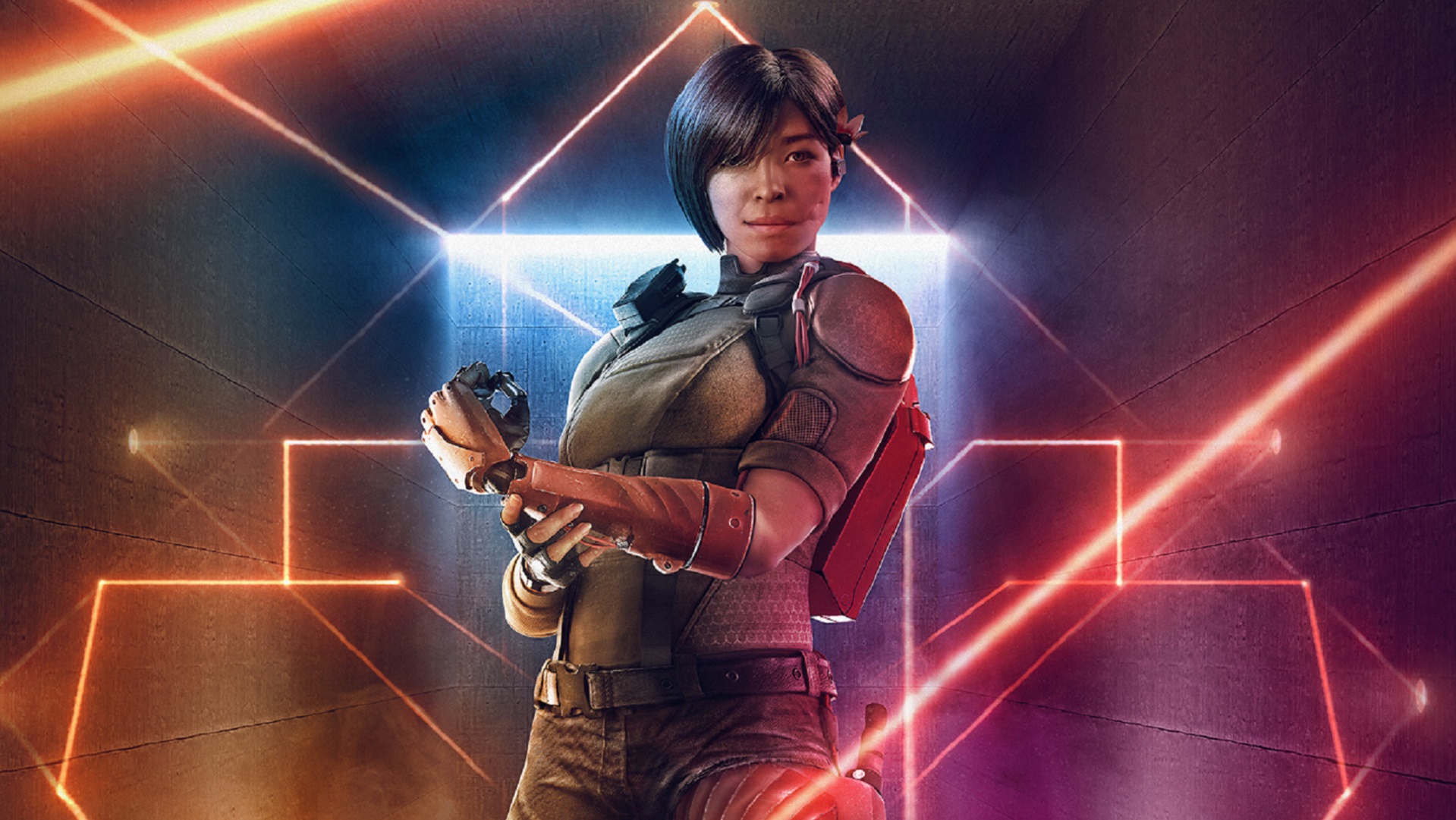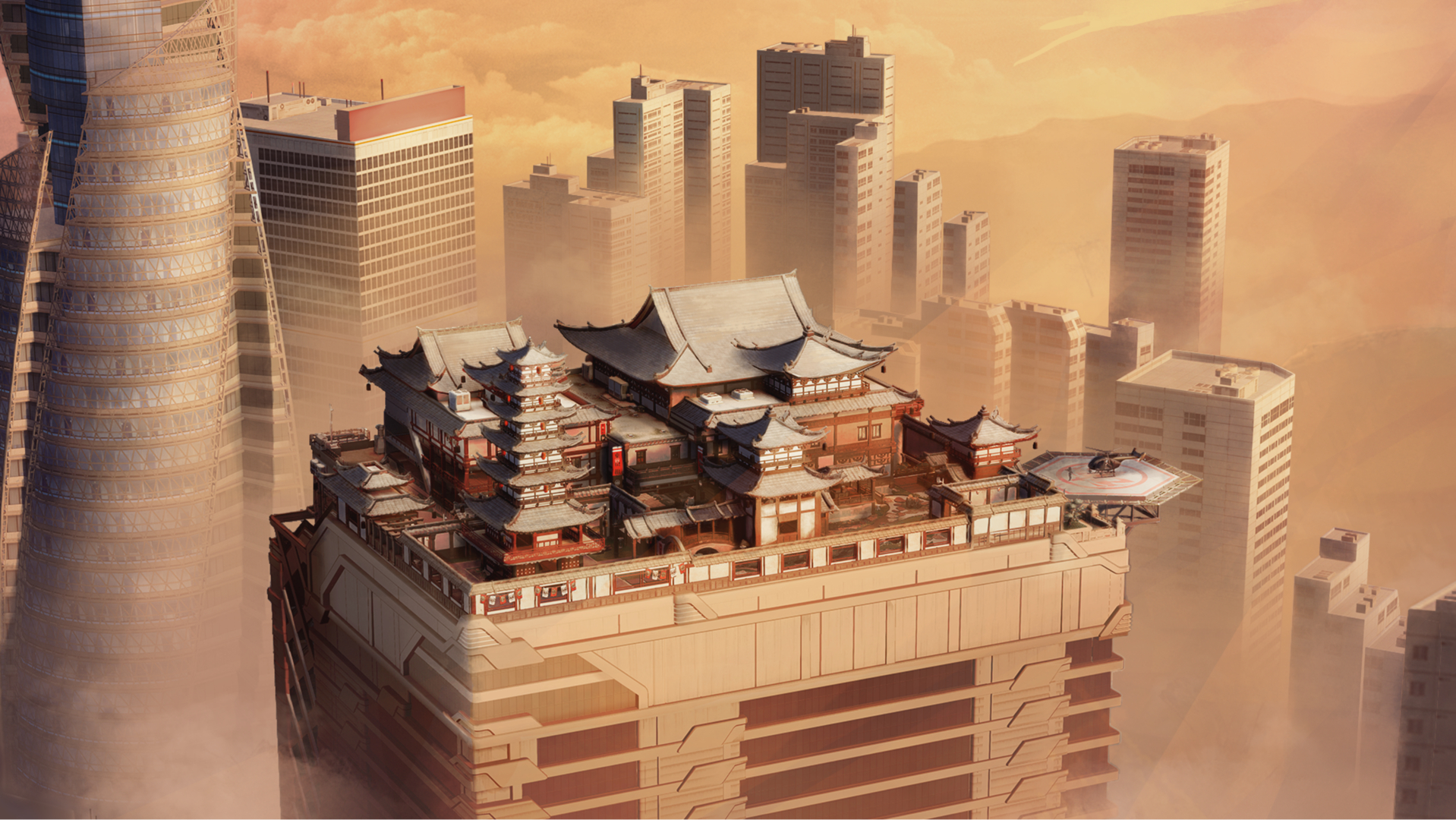Rainbow Six Siege has indestructible laser walls now, and it's pretty cool
Neon Dawn brings Aruni, a Thai defender that pulverizes walls with her prosthetic arm.

Rainbow Six Siege is wrapping up Year 5 with Thai defender Aruni, a fascinating new anchor who will undoubtedly be a favorite of mine. That is due, in no small part, to her badass, Big Boss-like prosthetic limbs that let her deploy defensive laser gates and remodel walls with a metal fist. She is radiating coolness from every direction.
It seems like Ubisoft had a lot of fun with her design, and I love any chance to naturally incorporate aspects of an operator’s identity with their functionality. This is no repeat of Oryx, whose wall-smashing ability is satisfying yet mostly useless in practice. Aruni’s Surya laser gates are complex, potentially meta-shifting defensive tools. They’re a step forward for a game in the midst of dramatic paradigm shifts. Alongside a key rework to Jäger that converts his Active Defense System to a cooldown, gadget denial is getting completely upended in Neon Dawn.
Gated community
The hard details of Aruni’s Surya gate are a lot to take in. She can deploy her three laser gate projectors on any door, hatch, or wall (reinforced or soft). On walls, one gadget will project spy movie-style laser wires across the length of one reinforcement. If a wall takes three reinforcements to completely cover, that’s how many Suryas it requires. Deployed laser gates automatically switch off when a defender is near and flip on when they’re gone. Laser gates won’t stop bullets, but it will intercept any thrown gadget—Trax Stingers, drones, grenades, Capitão bolts, everything. After zapping a gadget (or enemy) the gate will shut down for 30 seconds to recharge. After that, the projector can be shot by any defender to reignite the lasers and restart the process.
The real kicker? The projector itself is completely indestructible. No amount of explosions, bullets, or swings from Sledge’s hammer can destroy the Surya projector. That is completely unprecedented. Even the most durable Siege gadgets can be destroyed by grenades or hard breach charges, but Aruni must’ve found some Vibranium. One way or another, attackers have to trigger the gate to get through it. Ideally, that’d be a spare drone or flash grenade, but sometimes it may make the most sense to run though it yourself and take 30 damage. I thought that covering crucial doorways into bombsites would feel too oppressive to attackers, but in my first few matches we had no problem burning a gadget to pass through.
The Surya’s strengths and weaknesses are important to note, because they represent a larger shift in gadget denial. With Jäger's ADS now working on a similar cooldown and Wamai losing one MAG-NET, coordinated attackers can capitalize on this new window to push the site undeterred. Waste time, and Surya and ADS are back in play. The goal is to add real counterplay to these powerful gadgets beyond Thatcher’s EMP.
There's a brief delay between burning a gadget and the lasers dropping, so no instant rushes allowed.
The only big downside for attackers is that zapping a gadget is loud enough for any nearby anchor to hear, so stealthy infiltrations from Nøkk or a crouch-walking Ash will be difficult. Midway through our matches, though, we found that the laser gates were best used to cover rotation holes. On sites where control over rotation routes can make or break a round (Construction in the basement of Oregon comes to mind), the lasers are a handy advantage for the anchors fighting tooth-and-nail to keep that territory. She’s also a handy pick on a site with congested hallways like Kanal’s top floor. It’s a nice gadget to have around, but certainly not essential. Like a more nuanced Castle, Aruni can dramatically slow down a push and occasionally stop attackers completely (if I’m below 30 health and have nothing to burn on the gate, that’s the ball game). As someone who almost always anchors on defense, it’s also nice to see a gadget that compliments that play style even better than Year 4’s Wamai.
The biggest gaming news, reviews and hardware deals
Keep up to date with the most important stories and the best deals, as picked by the PC Gamer team.
Aruni is the first operator with a DMR on defense—she borrows Dokkaebi’s Mk14 EBR. If Ubi is feeling some trepidation about tossing a DMR into a defender’s hands, it makes sense that they’re testing the waters with the weakest one in the game. That said, at 60 damage per shot it outclasses Goyo/Kaid’s TCSG shotgun and has extremely low recoil. You can comfortably play with an angled grip and still shoot steady. The catch is that Aruni is stuck with the 1.5X scope, so it doesn’t lend itself too well to spawn peeks.
I’m pretty jazzed to use the Mk 14 on defense, but I’m also confident it’ll be quickly overshadowed by Aruni’s other option, Mozzie’s P10 Roni SMG. On top of boasting a respectable 26 damage, its breezy recoil and 980RPM is an overwhelming combo in Siege’s close-quarters firefights. It’s a flexible, headshot-friendly gun whose only downside is a small magazine. Curiously, Aruni’s Roni is limited to 1X sights compared to Mozzie’s 1.5X. I imagine this was done to give the Mk 14 a scoped edge over the SMG.

Sky, scraped
The final map rework of 2020 is Skyscraper, a map that I’ve hated with a passion for years. Defense or attack, I’ve never jived with its claustrophobic hallways, deadly exterior balconies, and lack of fun bomb sites. The rework still feels a lot like the original for better and worse, but it’s safe to say that it’s a major improvement.
Gone are most of those terrible balconies, replaced by scalable walls and windows. Upstairs, Dragon Terrace now has a roof over its head. This small change completely rewrites how Tea Room is defended as there’s a new indoor rotation that doesn’t force you to take stairs. Downstairs, the Bedroom/Bathroom site has seen a major facelift that widens the rooms and closes most of the windows that made it miserable to defend. Closed windows is also the theme of the first floor Kitchen/BBQ site, which now has lots more room to anchor fewer deadly angles.
The best improvement is the near-extermination of the exterior balconies. As one of your only ways to get inside the map, the wrapping balconies have always been hotly contested by defenders who just have to hop out and shoot straight down the narrow corridor. Besides a few slices of balcony near Tea Room and Geisha, they’ve all been demolished in favor of scalable walls and windows.
Surya gates don't discriminate between attacker and defender gadgets.
I’ve had a really great time with Siege’s first full year of map reworks. Reworking maps can be tricky business when you risk changing the identity of a map that players have loved for years. If Hereford Base is the example of a rework going overboard with changes, I think the new versions of Oregon, House, Chalet, and Skyscraper represent reworks done right. Each and every map, in my mind, has maintained its personality and unique features while remodeling the areas that really needed it. Ubi told me earlier this year that it hasn’t ruled out new maps in the future, but with plenty more in the hopper that could be improved (looking at you Outback, Fortress, and Coastline), I’m perfectly happy with reworks going forward. After all, every good rework is also one fewer bad map.
Siege celebrates its fifth birthday this December. In service game years, that makes Siege an FPS grandpa. It’s been interesting to watch Ubi’s priorities with the game evolve over time to prioritize quality over quantity. If Sam Fisher and Aruni are any indication, Ubi does better work when it can focus on a single role. Year 6 will add only four new operators to the game. I like new stuff, so it’s bittersweet, but I’m excited by the game’s maturing meta and how operator design will adapt to it.

Morgan has been writing for PC Gamer since 2018, first as a freelancer and currently as a staff writer. He has also appeared on Polygon, Kotaku, Fanbyte, and PCGamesN. Before freelancing, he spent most of high school and all of college writing at small gaming sites that didn't pay him. He's very happy to have a real job now. Morgan is a beat writer following the latest and greatest shooters and the communities that play them. He also writes general news, reviews, features, the occasional guide, and bad jokes in Slack. Twist his arm, and he'll even write about a boring strategy game. Please don't, though.

